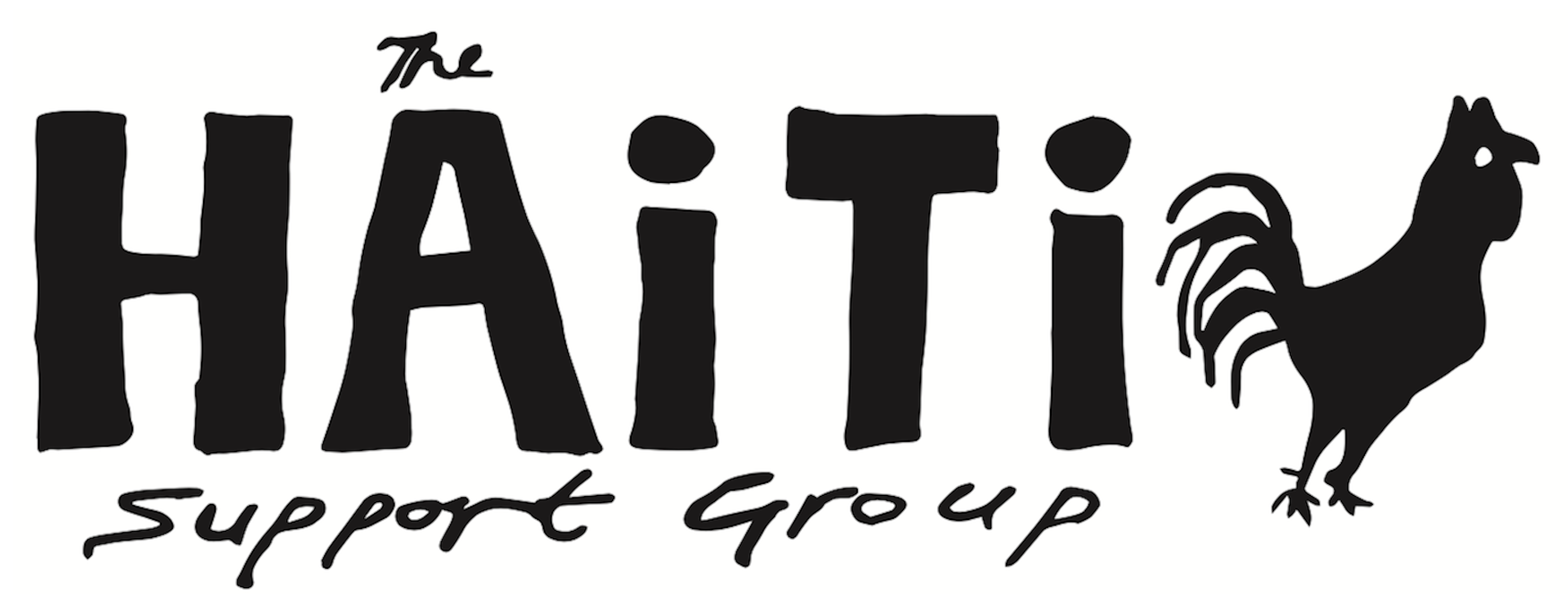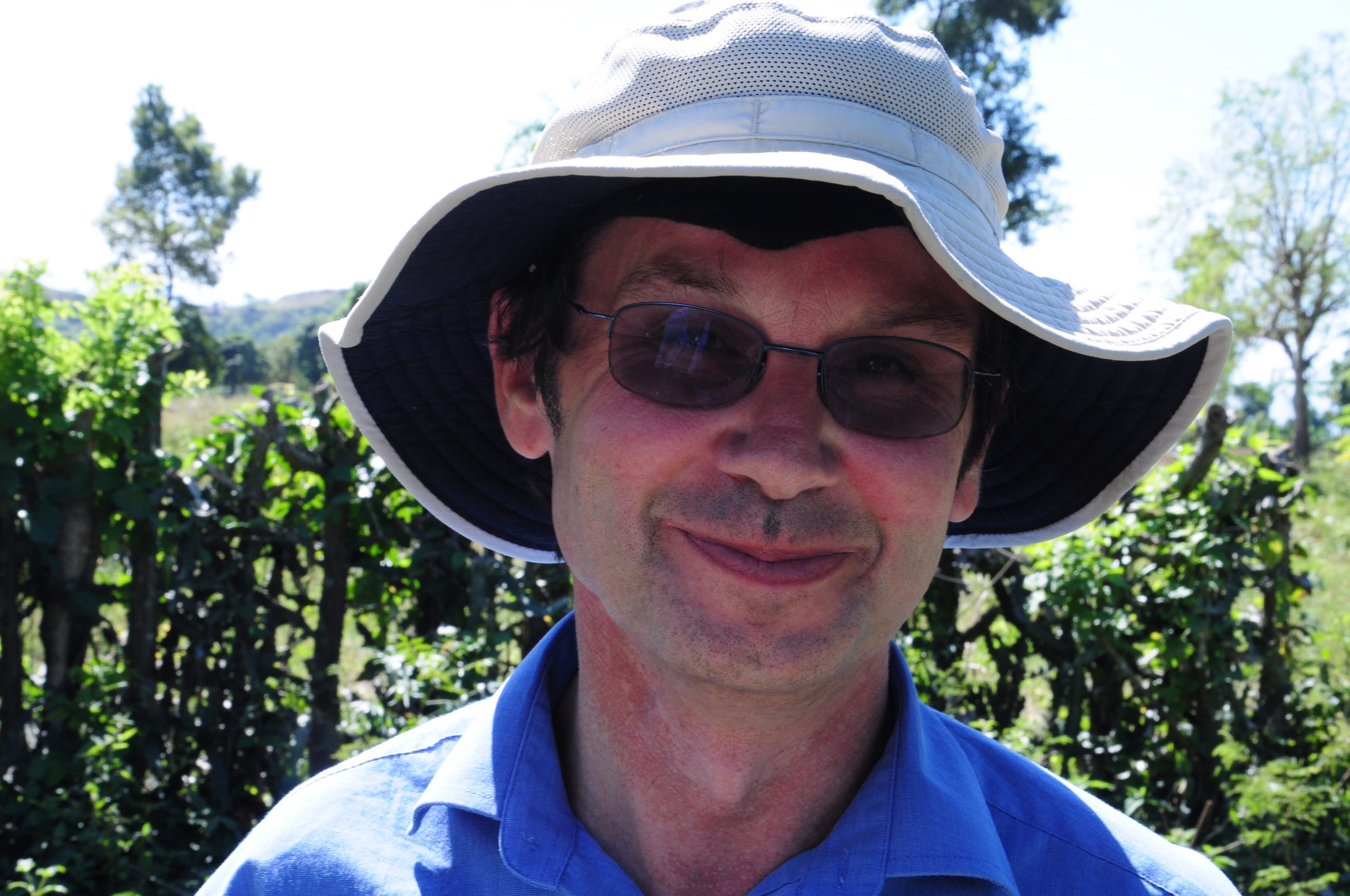HSG, St Marc, March 2010 — When engineers came to Montaca just outside the central coastal town of St. Marc in Haiti to do an appraisal of a broken irrigation system for Co-operative Agrikol Bab (KAB), their repair proposal seemed pure fantasy to local villagers. “They seemed to be suggesting they could make water flow uphill,” says KAB Preziden Emates Joseph. “No one believed them. Now we do.”
What the engineers did as part of three-phase project run by Productive Co-operatives of Haiti (PCH) was install an inverse siphon system to replace a collapsed aquaduct over a ravine with unstable sides.
“Basically it’s a huge underground U-tube, just like that under your kitchen sink. From this mini reservoir, pressure pushes water that flows into the pipe up onto the other side of the ravine,” says Ligrand Charles, the agronomist who co-ordinated the program. “With a 15 foot differential in height between the two sides, it’s the ultimate in sustainable design. Erosion can’t cause another collapse and it needs no electricity for a pump.”
The 14-inch diameter pipe provides up to 100 litres of water a second from the Grande Riviere du St Marc to 140 hectares of cultivated smallholdings supporting about 1200 people. Phase III of the project started in September, with Phase II consisting of 2000 metres of overground concrete canal and aqueduct nearby with another 1000 metres to be completed.
As we walk some of the two-foot wide channel, men and women washing clothes and themselves greet us. “As you can see there’s a social side to the above ground development here as well,” Ligrand points out. “Access to water for purposes other than irrigation was a major consideration for this part of the project.”
But the main function, irrigation, has been as much a success as access to washing water. Farming plots that average just half an hectare in size, families grow huge range of crops – stables such as sweet potatoes, cassava, rice and millet, vegetables such as okra, eggplant and tomatoes and fruits such as papaya, mangoes, and plantains. “This area is St. Marc’s breadbasket,” says Emates Joseph. “In the two years our irrigation system was broken the price of plantain in St. Marc tripled.”
But Montaca illustrates many of the basic problems of agricultural productivity, land tenure, and land pressure throughout Haiti where the urgency of sustained investment in subsistence agriculture has moved to the top of the political agenda since the January 12 earthquake. Standing under a huge mango tree, Joseph estimates that a mere 20% of KAB’s farmers own their land, the remainder renting their plots from grandons (big people) they have never met or seen for an annual average of 5000 Haitian Gourdes an hectare, (currently about $125, £85).
As elsewhere in Haiti, plots here have become progressively smaller as they have been repeatedly sub-divided, while erosion, soil exhaustion and a lack of access to fertiliser have put pressure on yields. For many, here as elsewhere, who have been squeezed off the land, migration to the cities, St. Marc, Gonaives or even Port-au-Prince has become an economic necessity not a choice.
The social organisation and co-operative principles that proceed and follow such a development are however key benefits. “We won’t touch a project like this unless the local community make the approach to us, rather than vice versa; demonstrate the social organisation to be able to manage and maintain it and meet and continue to meet all the basic principles of co-operative organisation,” says Betsy Wall, Executive Director of PCH. “If they met those conditions, we will provide capital and recurrent finance as well as training by Haitians who we insist live out here in the community. The community itself has to provide the social structure and labour.”
PCH provides two types of on-going recurrent finance — after making the initial capital expenditures — as part of efforts to ensure a co-operative is a long-term success. Agri-credit, as it is known, is the credit loaned to individual members of the co-operative for agricultural inputs, seeds, tools, and fertiliser. Capital credit is the finance made available to the co-operative to buy produce from individual members for storage to sell at the best possible time in terms of transport and prices.
Walking the length of the irrigation channels with Emantes Joseph inspecting the crops in the fertile plots it has spawned it seems obvious what difference this project has made to his community. But ask the Co-operative Preziden himself and he breaks his stride to reflect for a moment. “You know, it has made us all work together to one end for the good of all,” he asserts. “Just as Christ told us we should.”


